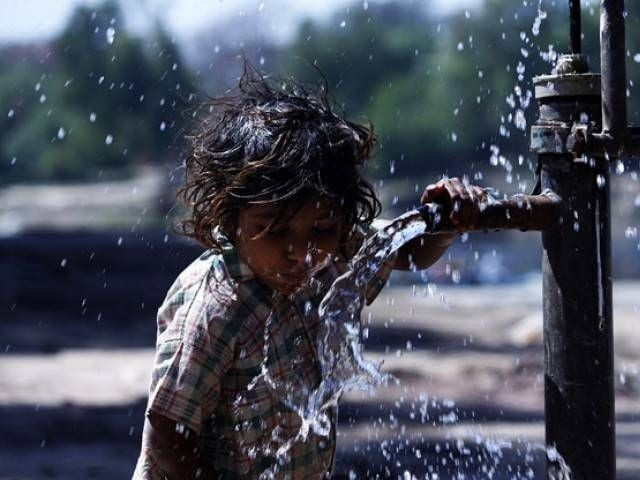Low rainfall causes water shortage
PMD urges judicious use of water reserves

Drought alerts are issued due to low rainfall in southern parts of the country. PHOTO: FILE
In its latest seasonal forecast, the Pakistan Meteorological Department (PMD) cautioned the authorities concerned to use the water reserves judiciously to meet the requirement for Rabi sowing.
PMD Spokesperson Khalid Malik told The Express Tribune that the country received 31 per cent below average rainfall this year as compared to 23 per cent below average showers in 2017. “This year, the below average rainfall during monsoon did not help much to improve the water levels in main reservoirs of the country and underground water,” he added.
“Mostly October and November are transitional periods of weather, therefore, in Pakistan, October and November go dry or there are few spells of light rainfall,” said Malik, adding that chances are the winter season may start by the third week of October.
On the contrary, the Met office had twice issued drought alert in the southern parts of the country due to scarcity of rainfall.
“It is too early to predict as to when the ongoing drought in the southern parts of the county will come to an end,” he maintained.
Water reservoirs: Preparation to build two small dams under way
According to PMD monthly monsoon update, the country in September recorded 35 per cent below normal rainfall in all the provinces except Balochistan where it remained above normal.
In August, the country received 51 per cent below normal rainfall in all the provinces. In July, rainfall recorded in the country was 12 per cent. However, it remained above normal in Punjab, K-P, Gilgit-Baltistan, below normal in Sindh and Balochistan and close to normal in Azad Jammu and Kashmir.
The latest season forecast suggests near normal rainfall in the country with two or three spells of light to moderate rainfall during October. In the meantime, due to rapidly falling temperatures, the snow and glacier melt contribution to Tarbela reservoir will become minimal.
The Indus River System Authority (IRSA) said the water level in Tarbela Dam had reached its dead level for the very first time in the month of July. Moreover, Mangla and Tarbela Dam reached dead level for the first time in March for the first time in 15 years.
The current water level in Mangla Dam is 1,166.50 acres feet against its maximum conservation level of 1,242 feet and dead level of 1,050 acres feet. In Tarbela Dam, the current water level is 1,497 acres feet against its maximum conservation level of 1,550 feet and dead level of 1,386 feet.
“This year, Tarbela Dam had reached its dead level twice in May and unprecedentedly in July, however, Mangla Dam reached its dead level in late February, improved a bit in April but is still at its lowest now,” IRSA Spokesperson Rana Khalid told The Express Tribune.
Therefore, considering the severe water crisis, Irsa will carry forward 5.8 million acre feet (MAF) water storage from Kharif to Rabi crop season, which is the second lowest in history after 5.4 MAF in 2004.



















COMMENTS
Comments are moderated and generally will be posted if they are on-topic and not abusive.
For more information, please see our Comments FAQ